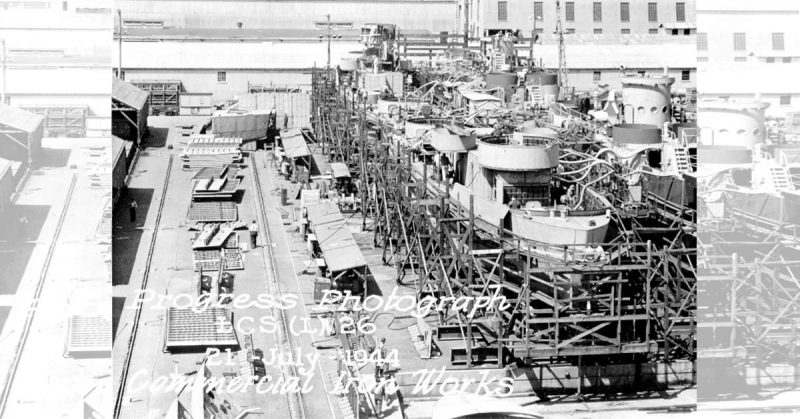During World War II, Portland was home to several shipyards that built warships for the war. When the war ended, those shipyards were no longer needed, and some changed into scrap yards, tearing apart the ships that were previously built there.
At their peak, the Portland shipyards were launching a new ship every four days, leading to an eventual shipbreaking boom in Portland.
President Franklin D. Roosevelt called for shipyards to work seven days a week to build cargo ships as fast as possible. He said that those ships would bring freedom to Europe. Portland stepped up to answer the president’s request. The keel for a ship was laid immediately after the previous ship launched.
Once the war ended, there was an excess of ships. In 1946, Emery Zidell took the opportunity to expand his father’s used machinery business, Zidell Machinery & Supply Company. He began cutting up the old ships and selling the scrap metal.
The scrap business was a natural direction for the company to take, and when Sam Zidell emigrated from Russia, he took the business in that direction, leasing part of the old Commercial Iron Works shipyard with a dock that was used to build ships for World War II.
Emery’s son, Jay, helped his dad in what became at one point the largest shipbreaking operation in the US. They dismantled destroyers, destroyer escorts, submarines, and most of all the “liberty ship” cargo ships.
The business grew as the military got rid of more and more WWII ships and eventually Zidell purchased the entire site. Because of Zidell, hundreds of warships ended up back where they started, on the banks of the Willamette River.
Charlene Zidell is Emery’s daughter and the current director of corporate communications for the company. She remembers when the company’s scrap yard consisted of the mound after mound of rusting metal.
The process of breaking down the ships left a lot of contaminated materials behind. There was insulation, linoleum, wiring, and paint – all left to contaminate the environment.
As they dismantled the ships, the workers would spill oil and burn it off. They’d burn the toxic insulation off of the copper wiring. They would drag contaminated pieces of the ships all over the shipyard, including cancer-causing asbestos and PCBs. All of this happened right next to the Willamette River.
The company stopped dismantling ships in the 1970s.
It wasn’t until later, as awareness of environmental issues increased, that the Zidells began to face the consequences of the environmental damage that had been done.
The site was marked as potentially hazardous by environmental regulators in 1986. The Oregon Department of Environmental Quality investigated and invited the company to engage in a voluntary cleanup program which the company agreed to in 1994.
“Once we became aware of it, we knew we had a legal responsibility, and we wanted to step up and do the right thing,” he said. “It was a vastly larger undertaking, both in time and cost, than we had any idea going into it.”
The scope of the damage eventually extended to 30 acres of land and a half mile of the river bank. Cleaning that up has not been easy.
It took years just to test and develop a plan for cleaning the site. When they were ready to begin the cleanup, the Zidells hired Paul Fishman to be the environmental consultant overseeing the project.
Fishman knew it was crazy to take the job but eventually agreed to head up the largest project of his career.
The testing showed that there were hotspots of contamination along the dock site where the warships had been cut into pieces.
The cleanup plan required removing most of the contaminated soil and river sediment. They then covered the land and riverbed with a thick layer of clean sand, dirt, and gravel. They then planted over 15,000 indigenous plants.
Fishman says that the entire property is now capped and the source of contamination has been cut off. The river is now clean enough to swim in, but it took over 20 years and cost over $20 million. The Zidells were able to get much of their money back from insurance companies and from the federal government which supplied the ships, OPB reported.
To get the rest of their money back, the company is closing the business they had turning WWII ships into barges. The closure will make 30 acres of prime riverfront property available for development. The Zidells have the vision to turn it into a post-industrial neighborhood.
